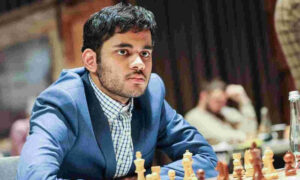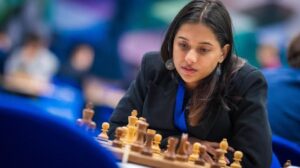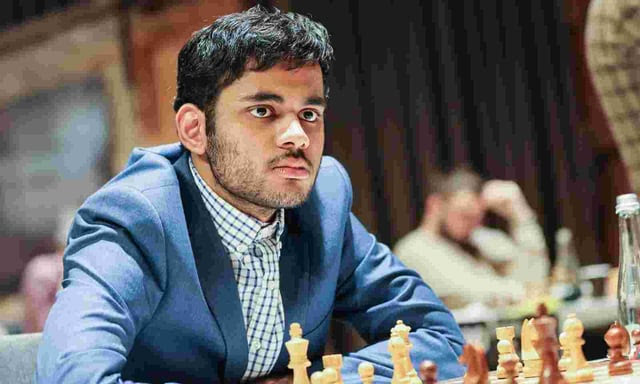
What after Viswanathan Anand? The question bugged Indian chess fans for years. The country that produced a five-time world champion and Grandmasters by the dozen had not made a mark at the top level for years. Some came close, but they did not win the big events. Nobody doubted their potential, but when it came to showing something tangible, there was nothing.
The heist of Hungary, where Indian won gold in the open and women’s sections, breaks that hoodoo. They were among the favourites, being the second seeds in open and top seeds in the women’s section. But to be the favourites and perform like favourites are different deals altogether. The team dominated the open section right from the start and the women came back from a spot of bother with flying colours. It was the performance befitting a truly top team.
Indian youngsters making waves is not exactly a new thing. P Harikrishna had become the first junior world champion after Anand. Koneru Humpy had risen to the top of the women’s world rankings nearly two decades ago. K Sasikiran had become the first Indian to cross the 2700 mark in Elo ratings after Anand. Even that was many years back. In between, many others had shown some spark. Quite a few of them were hailed as prodigies. Yet, Indians didn’t win any big prize.
That’s why the double gold at the 45th Chess Olympiad is a watershed moment in the history of Indian chess and sport. These players have shown that there is a lot more to Indian chess after Anand. They have started a new chapter. And now that this has been achieved primarily due to the performance of the youngsters, who knows where they will stop? Some of them are 18. This is unbelievable. Even Anand said this, using this very word.

To win is something and to dominate an 11-round event from start to finish is something else. That’s why the triumph in the open section will remain a talking point. Spearheaded by players aged 18, 19 and 21 and aided by a 30-year-old, this has to be one of the youngest teams of have won the world’s biggest team chess championship. They showed spunk, steel and grit, other than merit. When tough questions were asked, they didn’t flinch. Rather, they gave firm replies. D Gukesh, R Praggnanandhaa, Arjun Erigaisi and Vidit Gujrathi showed why they are rated so highly. The presence and expertise of the 38-year-old Harikrishna must have helped.
The women’s team was not helped by the sub-par performance of the most seasoned player, D Harika. She was off-colour. Even R Vaishali was below her usual high standards. Then, when it mattered, up stepped youngsters Divya Deshmukh and Vantika Agarwal. The wins they scored were pivotal in the gold the team eventually secured. Tania Sachdev also played her part when called up to play on the fourth board. This was a show where the younger ones shouldered responsibility.
That’s why this double gold is so satisfying. It didn’t come relying on a super-strong individual. This was team effort to a major extent. They played as a team, shared the difficult times as a team and won as a team. For a country starved of big-time success in chess after Anand’s last World Championship win in 2012, this was redemption and a window to look ahead to a brighter future.




